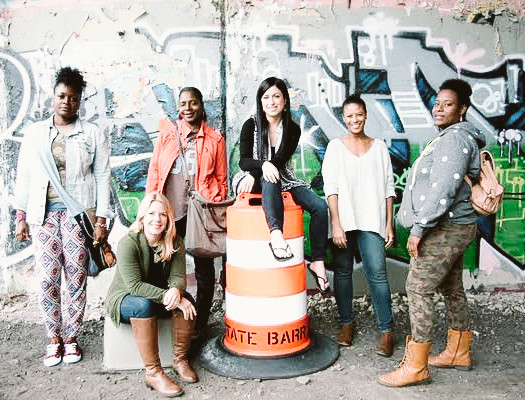Understanding The Fundamentals Of Fair Trade
 As consumers we need to sort through many messages regarding fair trade these days and it can be overwhelming for the most conscious of us to differentiate between labels. As the Founder & CEO of one of the leading fair trade accessory brands, I thought I’d help to demystify fair trade to make your shopping a little more care-free.
As consumers we need to sort through many messages regarding fair trade these days and it can be overwhelming for the most conscious of us to differentiate between labels. As the Founder & CEO of one of the leading fair trade accessory brands, I thought I’d help to demystify fair trade to make your shopping a little more care-free.
In the broadest sense, fair trade goods are those that give the producers of that good a fair price and a path to build a better life for themselves.
One confusing point is that some products may be fair trade certified, and others may be made according to fair trade principles. The difference is subtle and both have their merits.
In the fair trade world, a certification is a label that designates that a product has been produced in a facility that has been audited to ensure that it meets certain criteria regarding health and safety, wages, and a number of other specific criteria. Fair Trade USA has 344 compliance points that a worksite must adhere to get the fair trade label. Products that are fair trade certified tend to be commodities like coffee.
Recently, Fair Trade USA, the United States’ main certifying body has also begun to certify apparel in addition to agricultural products. This foray into certifying apparel is fabulous as previously, there was not a way to certify such manufactured products.
Fair Trade USA’s certification procedure for manufactured products is as rigorous as it is innovative. They do a real time analysis on the cost of living in the producing country, and then take a look at the factories’ specific wages. It is required that the purchaser adds on a fair trade premium to the products they’re buying so that the new price of the product allows each worker to earn that living wage.
Each facility that is fair trade certified then forms a fair trade workers committee, and it is this committee that gets to decide how they spend that premium. They may decide to give the premium back to workers as a cash bonus, use it purchase health insurance, or even a bicycle for each staff member to get to work more easily. The choice is in the workers hands.
This system is new, but from an ideological perspective, it’s wonderful. Solid field research and real wage figures are used to get workers a true living wage.
Some of the most effective fair trade programs I know of are small companies or NGO’s with a strong poverty alleviation mission that work directly with groups of women in Africa that work out of their homes, or small informal artisan owned businesses in South America. For these smaller companies, the cost of such certification is prohibitive and their decentralized production strategy further complicates such audits.
The unifying choice for most small to medium sized companies that want to be fair trade is to apply to be members of the Fair Trade Federation. To apply for membership an organization must undergo a thorough and detailed self-audit, including producer references and full financial information. 40% of applicants are rejected for not upholding the Fair Trade Federations code of practice.
Fair Trade Practices are a holistic way for a company to operate. Members of the Fair Trade Federation are required to abide by certain rules that go above and beyond what is included in a certification audit – such as providing advance payment to artisans and honoring long term relationships, as opposed to buying from a producer for just one season.
As fair trade evolves, the role that fair trade organizations play in determining what defines fair trade will evolve too. The movement is at a point right now where these organizations are doing a lot of good to guide companies. However, the industry is young enough that the majority of the responsibility does and should lie with the companies themselves to show consumers how they are fair trade – through stories, surveys, videos, and artisan testimonials. One of the greatest things about fair trade is that it is holistic and complex. As a consumer – fall in love with the comprehensive nature of the movement, and take the time to dig in and get to know the stories behind the fair trade products you love.
LEARN + CONNECT
Learn more about Faire Collection
Connect via Facebook and Twitter
FROM THE EDITOR
At Conscious, remarkable people and organizations inspire us, and so we set out to tell stories that highlight human interest stories, global initiatives, innovation, community development, and social impact. You can read more stories like this when you subscribe.
Editor’s Note: Conscious Magazine has teamed up with Amanda Judge from Faire Collection to learn how her journey in fair trade fashion has helped eradicate poverty. Find out more about Amanda Judge in this interview here. Follow the 6-part series. For part 3 of her series, Amanda takes us on her journey in Ecuador through this photo essay.


